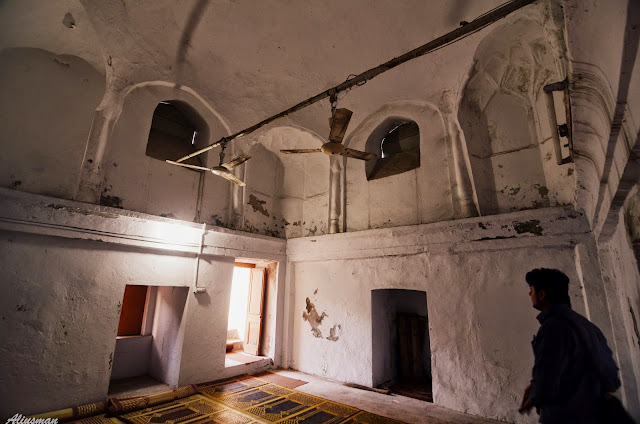# Gurdawara Roop Chand or an Unknown Mughal Era Baradari
Accompanied by my brother and our friend Kashif Gurki, we embarked on an exciting exploration of the outskirts of Lahore, driven by our shared passion for uncovering the remnants of the Sikh era. Having already visited a Samadhi in Kohrian village along Barki Road, our curiosity led us further towards Jahman village, nestled beside the BRB canal.
As we made our way along the canal, a local resident approached us, curiosity piqued by our presence in the area. Eager to share our purpose, we explained that we were avid enthusiasts of history, particularly intrigued by old architectural wonders. The friendly local, appreciating our enthusiasm, directed our attention towards a small village called Gaga, where the remains of an ancient Samadhi were said to lie.
Gaga, a quaint village located near Nurpur, held significance beyond its own historical remains. It was in Nurpur that the legendary subcontinental wrestler, Kikar Singh, received his early training, making it a place steeped in sporting history. However, our immediate focus was on the Samadhi awaiting our exploration in Gaga.
Located at the far end of the village, the site had been allocated to migrants who had arrived during the partition of 1947. Intriguingly, the ancestors of these migrants shared a captivating tale with us. They explained that the edifice we were about to visit was believed to be the tomb of a Sikh named Roop Chand, who, after embracing Islam, had been laid to rest at this very spot. However, even after residing in the village for the past 68 years, they remained uncertain about the authenticity of this account, considering that the structure itself appeared to be at least 300 years old. Speculation arose that it could very well be a Samadhi—a testament to the Sikh heritage of the region.
As we approached the enigmatic structure, our minds filled with anticipation and curiosity. The possibility of unearthing centuries-old history and untold stories beckoned us forward. Gaga, with its quiet charm and a hint of mystery, seemed to hold the key to a forgotten chapter in the region's past. We were ready to immerse ourselves in the exploration, hoping to shed light on the true nature and significance of this enigmatic Samadhi.
It has roughly 12 x 12 feet in
horizontal dimensions and 10 ft in height. It has an arch opening on all four
sides and one side opening was closed with temporary brick masonry. The top
roof dome had fallen a few years back.
I have seen almost every old structure
of the Sikh era in this area. But, this building's architecture is quite different
from them. In Sikh gurdwaras and Samadhis; the entrance opening is from the eastern side which is an auspicious old tradition. But this structure has openings
on all four sides; which is not observed anywhere else. This type of
configuration was usually used in Mughal Baradari. Locals also told us that a few
decades back it has a tall entrance gateway and garden which disappeared with the
passage of time.
The bricks used in the construction of this
edifice are different as compared to bricks used in any historic building on the outskirts of Lahore . Arches, partitions, and brickwork; all relate
to Mughal construction. I came to the conclusion that maybe it was a tomb or baradari
constructed in the Mughal era and during the Sikh era that might be converted into
Gurdwara or Samadhi…..



















.jpg)






























